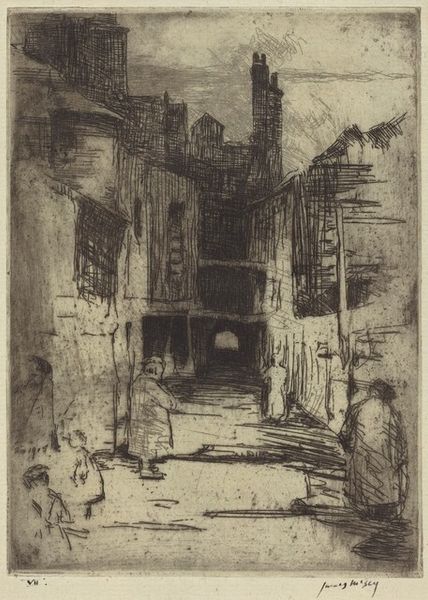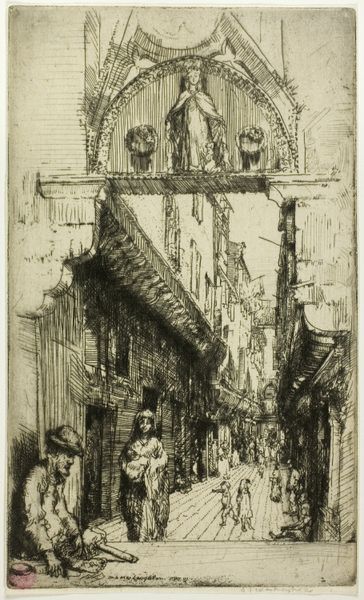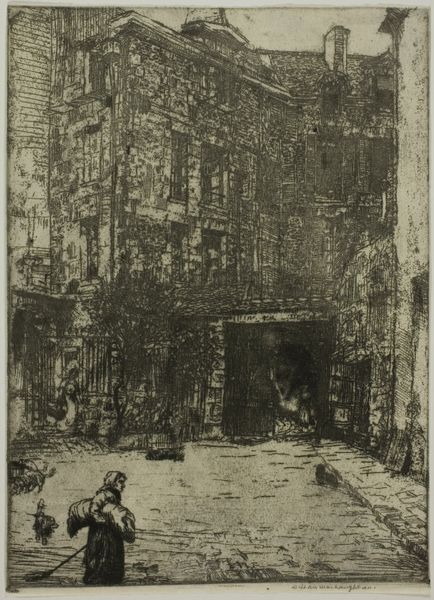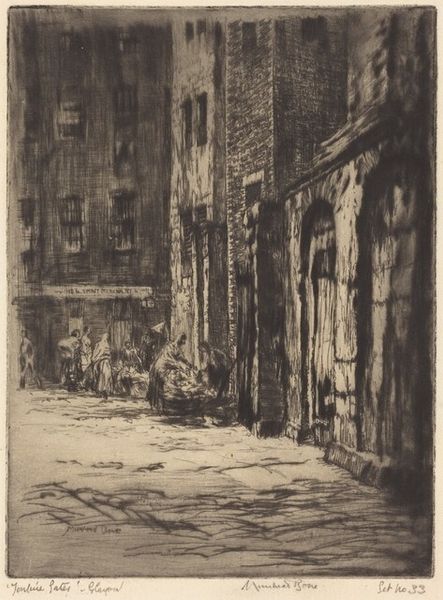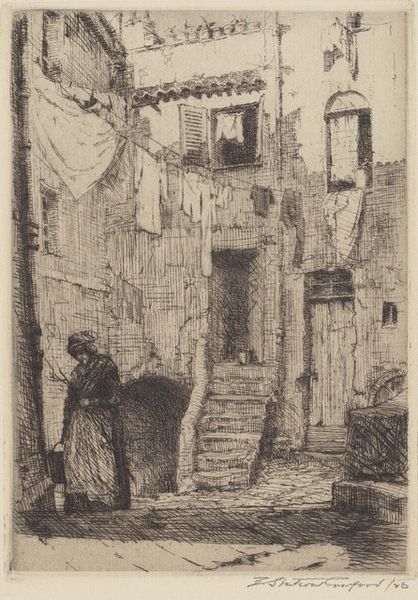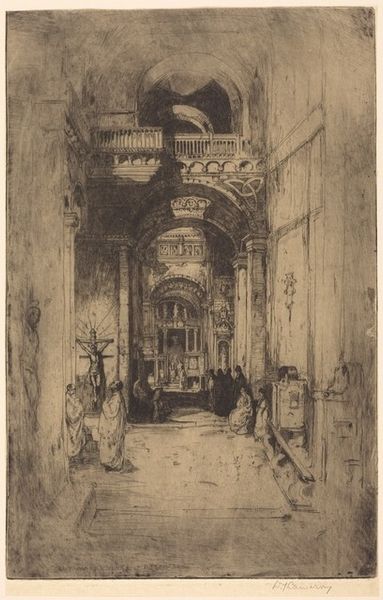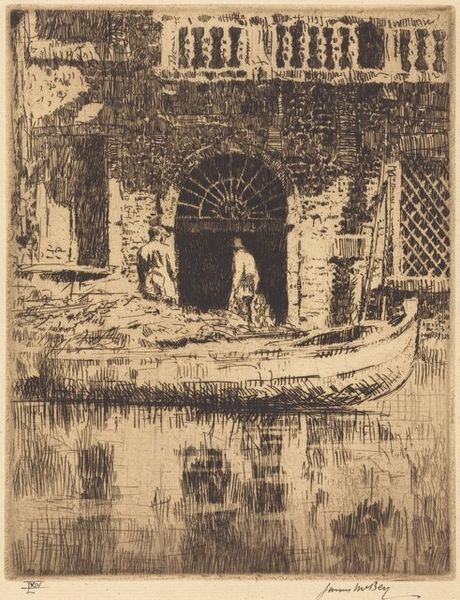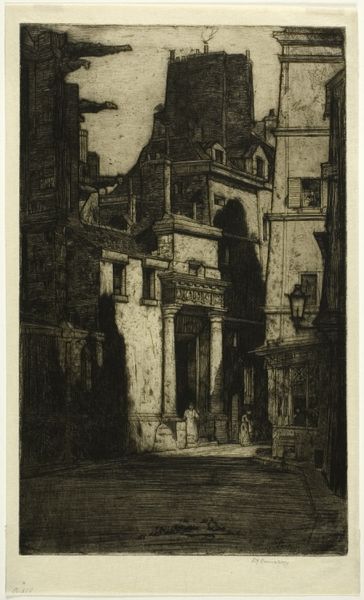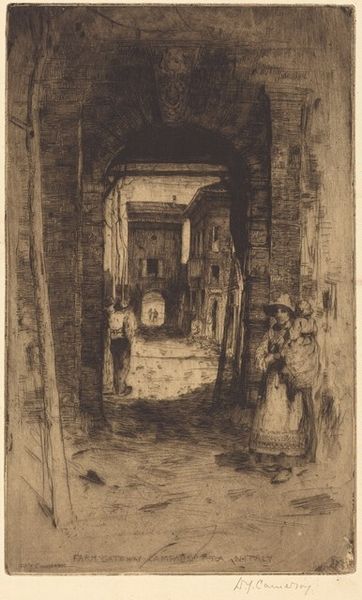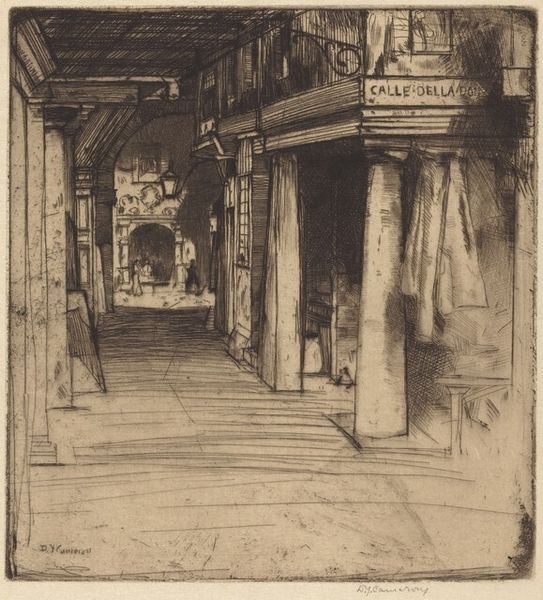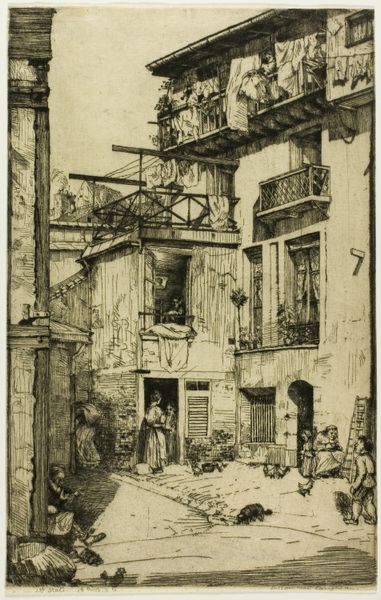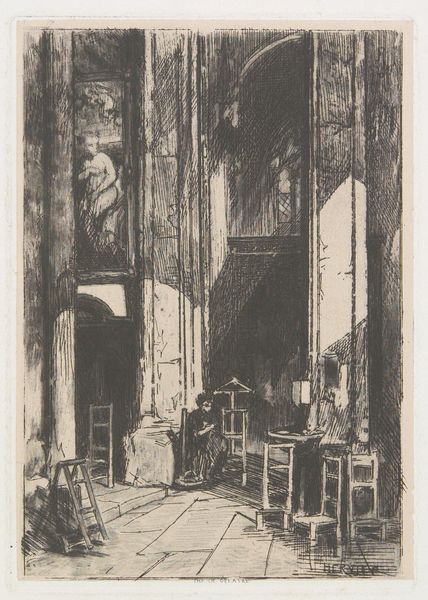
Dimensions: plate: 36.83 × 28.58 cm (14 1/2 × 11 1/4 in.)
Copyright: National Gallery of Art: CC0 1.0
Curator: What strikes me is how heavy everything feels in this print – almost a gothic weight. Editor: We're looking at "Old Houses, St. Cirq," an etching made around 1910 by Frank Brangwyn. You're right, it possesses a density; look at that deep bite into the paper, creating these wonderfully rich darks. For me, this reflects the industrial processes used in printmaking that echo heavy industry—metal, acid, intense physical effort. Curator: It really does give off the atmosphere of a tangible moment caught in time – like an ancient behemoth about to creak open a forgotten portal. Tell me more about this connection of "heavy industry" with his romantic baroque flair. Editor: Absolutely. Brangwyn was incredibly prolific and worked across media—paintings, murals, furniture design, even stained glass. All these media demanded technical skill, collaborative effort, and mastery of the physical properties inherent in material transformation. In this etching, it's interesting to see his baroque impulse filtered through this more democratized and reproducible medium. He translated its grand romanticism to the masses! Curator: You mentioned mass reproducibility - with my understanding of baroque's love of the dramatic – it almost doesn’t square. Wouldn’t these new methods dull that intensity? Editor: It might seem so, but remember the late 19th and early 20th centuries witnessed profound social and political shifts, thanks in part to the means of production and distribution of material. By embracing these technologies in art, Brangwyn can be viewed as both questioning the definition of high art while offering it to a much wider audience. Curator: I love that! So, how the tools and the artwork find themselves interwoven. Looking at this city, this feeling comes through stronger because the house and folks around have the marks and story of time woven together as one, from bricks to brow lines. Editor: Exactly. Brangwyn’s deep connection to process makes even this relatively small etching reverberate beyond the confines of the plate. Its industrial strength, baroque leanings, and quietude allows an intimate encounter with both craft and industry—ultimately democratizing access to intense emotion, which now I realize why I loved it on first impression. Curator: To experience history on all levels, no matter how seemingly disparate - this is indeed why I make art. Thanks for a refreshing look at the materials that make that story.
Comments
No comments
Be the first to comment and join the conversation on the ultimate creative platform.
